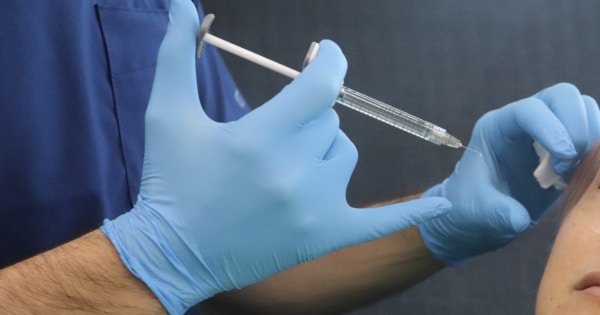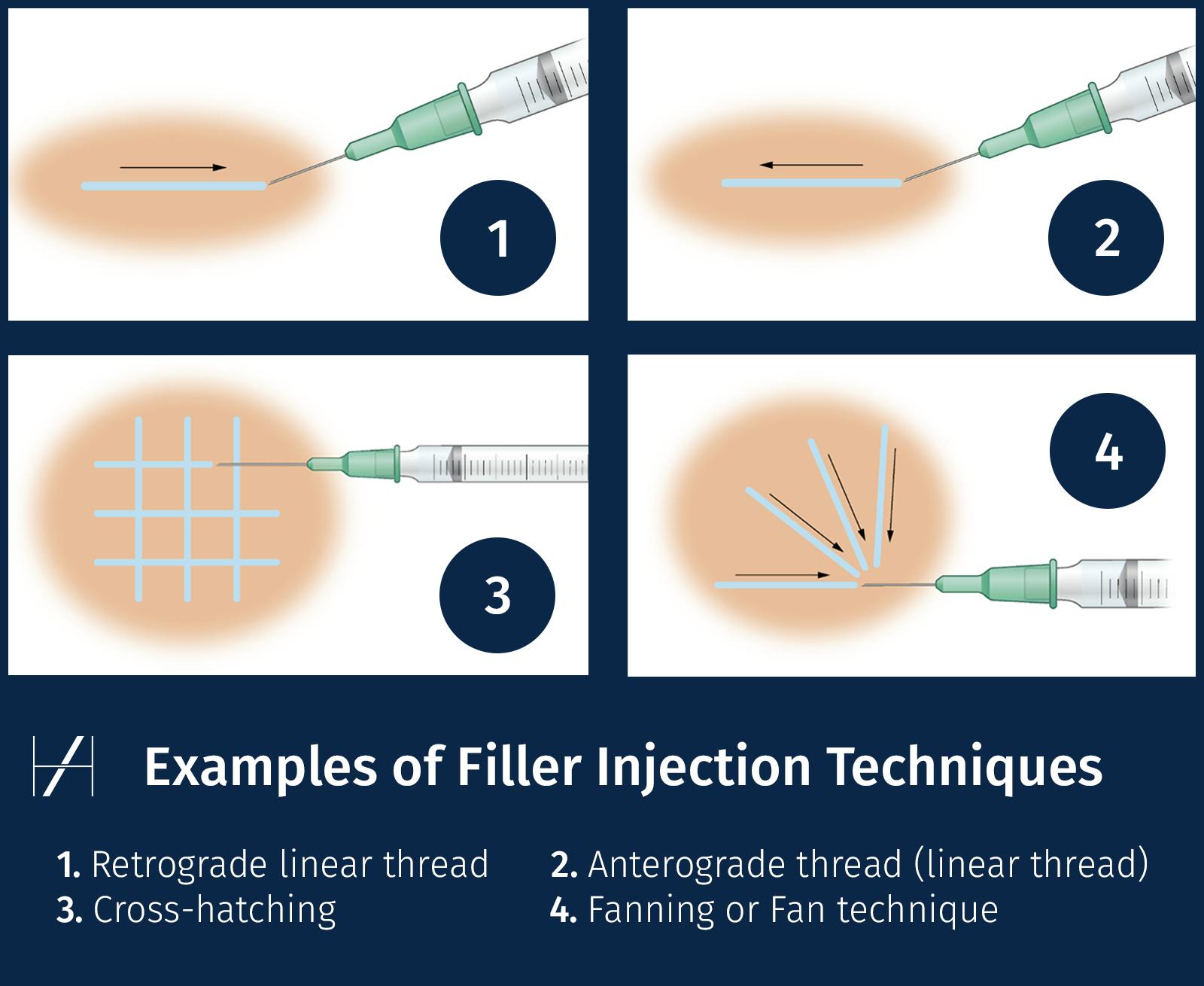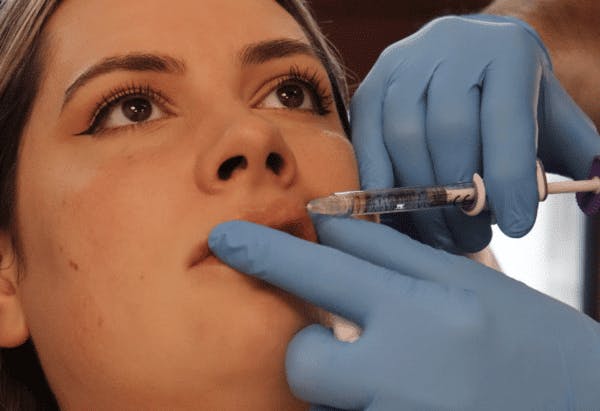4 Essential Dermal Filler injecting techniques

There are multiple essential dermal filler injecting techniques that every medical aesthetics practitioner should have in their toolbox. These will allow you to deliver treatments with safe outcomes and artistry.
Obviously, you’ll need to master these techniques from a practical point of view. This may be with a needle, a cannula or both. Additionally, you’ll need to learn when to use them – and when not to use them.
They can be used as sole techniques, or you may combine techniques to achieve the desired outcome. You should also understand the anatomical areas and products that each technique is best suited to.
The following four injecting techniques are discussed in the context of use with hyaluronic acid-based soft tissue fillers. Once you gain confidence with a needle, practice using a cannula. You’ll need to be sufficiently competent in both to progress to being an aesthetics specialist.

4 essential filler injecting techniques
Linear threading
This injecting technique involves depositing small amounts of filler, using a needle or cannula, in a linear fashion. The goal is to create a smooth surface and reduce the appearance of the lines. The most popular technique is retrograde linear threads which are created when the filler is injected whilst withdrawing the needle.
Linear techniques are quite precise. This is key, for example, if augmenting the vermillion border and lip body or superficial dermal lines with crosslinked skin boosters.
They aim to keep to one horizontal facial plane. For example, this may be in the region of the zygoma or nasolabial fold with a cannula.
Keeping the needle or cannula moving also means less likelihood of filling any blood vessels you may encounter along the route. Using aspiration techniques to look for occlusion with this method appears a little less meaningful when the needle or cannula is in continual motion anyway.
Cross-hatching
This less popular technique injects filler in a criss-cross pattern to create a lattice ‘cross-hatched’ effect. This technique helps to distribute the filler evenly, support tissue and reduce the appearance of lines and wrinkles. Cross-hatching tends to be used in layer 2 only.
It’s generally employed when treating the oral commissure for support or in the marionette region. As there are multiple entry points required, this technique has generally been superceded with cannula techniques using fanning in different directions.
Fan technique
With this technique, you inject the filler in a fan-shaped pattern to create a more natural-looking result.
You start and inject the filler as you would with the linear thread technique. Then, instead of fully withdrawing your needle between filler deposits, just before the needle or cannula re-emerges you reposition it. This allows you to change direction and deposit filler there next, creating a fan shape from the initial entry point in the desired layer.
This fanning technique can be used to treat wide areas such as the preauricular region in layer 2, the medial cheek in layer 4 and the marionette fold in layer 2.
Microdroplet technique
The microdroplet technique involves injecting small droplets of dermal filler across the treatment area in the same plane. This technique creates a more natural-looking result and allows for greater precision.
Microdroplets are often used for injectable skin boosters. However, this technique can also be used for soft tissue filler treatments such as lip filler.

FILLER TRAINING COURSES FOR DOCTORS, DENTISTS AND NURSES
Harley Academy aesthetics training courses for doctors, dentists and nurses, including midwives, are widely respected through the industry.
Whether you’re a novice wanting to learn how to transition your medical skills to a career in aesthetics, or an experienced injector wanting to hone specific filler techniques, we can meet your needs.
We’re best known as pioneers of the Level 7 Diploma in Botox & Dermal Fillers, the industry-leading, Ofqual-regulated qualification created by our founder, Dr Tristan Mehta. However, we also cater to aesthetics practitioners of all levels.
Doctors, dentists, nurses and midwives who simply want to find out more about what a career in aesthetic medicine involves are always welcome to attend our free Aesthetics Careers Open Evening.
Browse our range of injectables courses online, or, for personalised advice, call our Courses team on 020 3859 7598.
Alternatively, you can book a call back for a time that’s convenient for you. Or you can now drop them a WhatsApp message with your queries.
Whichever way you contact them, they’ll be happy to answer all your questions and help you to find the best aesthetics training for your needs.
All information correct at the time of publication
Download our full prospectus
Browse all our injectables, dermal fillers and cosmetic dermatology courses in one document
By submitting this form, you agree to receive marketing about our products, events, promotions and exclusive content. Consent is not a condition of purchase, and no purchase is necessary. Message frequency varies. View our Privacy Policy and Terms & Conditions
Attend our FREE open evening
If you're not sure which course is right for you, let us help
Join us online or in-person at our free open evening to learn more
Our Partners













STAY INFORMED
Sign up to receive industry news, careers advice, special offers and information on Harley Academy courses and services

